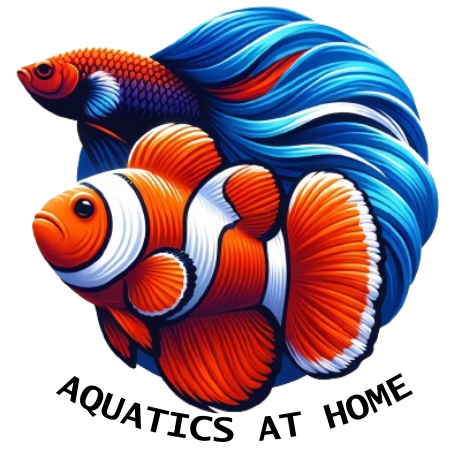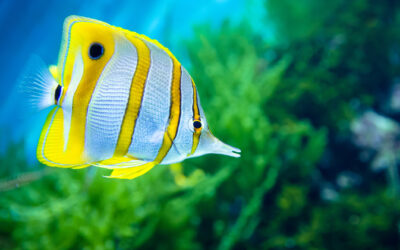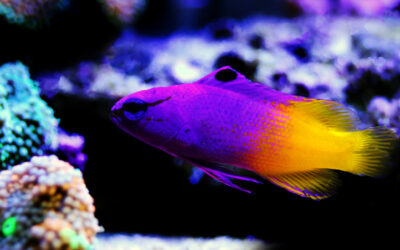Are you thinking about adding clownfish to your saltwater aquarium? These vibrant and playful fish are a popular choice for both beginners and experienced fish-keepers alike. I’ve enjoyed funny swimming clownfish in my tanks since around 2005- I have been lucky enough to keep some for over a decade too!
My clowns have been very personable. I had one who would only swim to the front of the tank for my wife – he didn’t like me for some reason. The other two loved me, though! I could watch them swim around for hours. In time, you will come to know your clowns’ personalities – each one is unique!
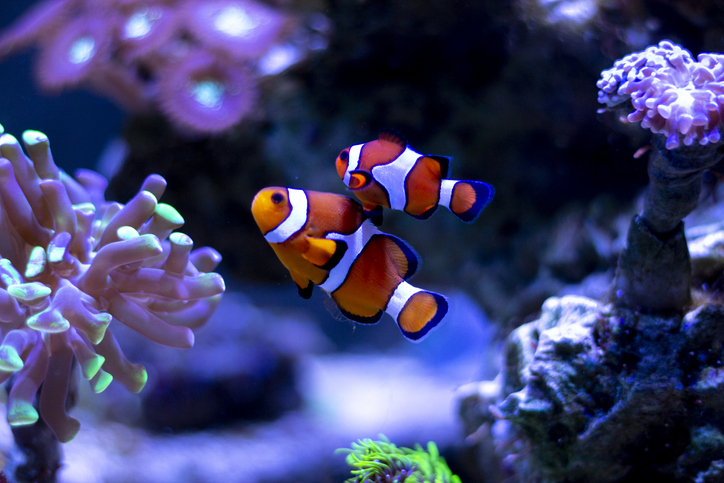
While clowns are relatively easy to care for, there are some important factors to consider when setting up a habitat for these colorful fish. In this comprehensive guide, we will cover everything you need to know about clownfish care to ensure a healthy and happy life for these beloved creatures.
Clownfish Lifespan and Health
Clownfish, which belong to the damselfish family, have a lifespan of about 6 to 10 years in captivity. With proper care, you can expect your clownfish to live a full and healthy life. While they are typically hardy and resilient, they are not completely immune to health issues. Signs of poor health in a clownfish may include lethargy, loss of appetite, or unusual spots or marks on their skin.
To keep your little friends in optimal health, it’s important to regularly monitor the water quality in your tank. Clowns are sensitive to changes in water temperature and pH levels, so it’s important to maintain a stable environment. You can use a water testing kit to check the levels of ammonia, nitrite, and nitrate in your tank. If any of these levels are too high, it can cause stress and illness in your fish.
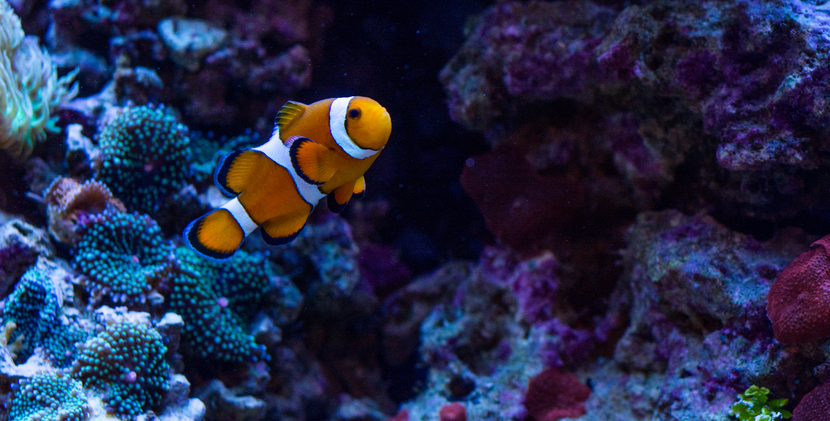
In addition to monitoring water quality, feeding your clownfish a balanced diet is crucial for their health. Clownfish are omnivores and can eat a variety of foods, including flakes, pellets, and frozen or live foods. It’s important to avoid overfeeding your fish, as this can lead to obesity and other health problems. You should also avoid feeding your clownfish foods that are high in carbohydrates or contain fillers.
Providing ample space for swimming and hiding is also important for your clownfish’s health. Clownfish are active swimmers and need plenty of room to move around. They also appreciate places to hide, such as rocks or plants, where they can retreat if they feel threatened or stressed.
Getting to know your clownfish’s behavior and personality will also help you identify any potential health concerns early on. Healthy clownfish are active and curious, and they will often come to the front of the tank to greet you. If you notice your fish behaving differently, such as hiding more often or swimming less, it may be a sign of illness.
Oh, and don’t be alarmed if they nip at your fingers. Clowns can be a little territorial, and you should classify this fish as semi-aggressive. They won’t mess with bigger fish typically, so if you bring a newcomer to the tank, make sure they are not going to be afraid (or attack) your existing community.
Tank Requirements and Water Parameters
When setting up a tank for clownfish, it’s crucial to ensure that the environment is suitable for their needs. Clownfish require a minimum of a 20-gallon tank, although larger tanks are recommended if you plan to keep multiple fish or other species. A 20-gallon tank can hold about 2-3 of these fish (and that’s about it – 3 is pushing it). A mated pair might be ideal for a small 20-gallon.
When selecting a tank for your clowns, consider the size and number of fish you plan to keep. Clownfish are social creatures and thrive in groups, so a larger tank will provide more space for them to swim and interact with each other. Additionally, if you plan to keep other species in the same tank, such as sea anemones or invertebrates, you’ll need to ensure that the tank is large enough to accommodate everyone comfortably.
Once you’ve selected a tank, it’s time to consider the water parameters. Clownfish are sensitive to changes in water chemistry, so it’s important to monitor the pH, temperature, and specific gravity closely. A pH level between 7.8 and 8.4 is ideal, as it mimics the natural conditions of their native habitat. The ideal temperature range for these fish is between 75 and 82 degrees Fahrenheit, although they can tolerate temperatures outside of this range for short periods of time. Finally, the specific gravity of the water should be between 1.020 and 1.025, which is slightly lower than the salinity of natural seawater.
Regular testing of the ammonia and nitrate levels in the tank is also important to ensure a healthy environment for your fish. Ammonia is toxic to fish in high concentrations and can quickly lead to illness or death, so it’s important to keep levels low. Nitrate is a byproduct of the nitrogen cycle in the tank and can also be harmful in high concentrations. Regular water changes and the use of a quality filtration system can help keep these levels in check.
Overall, providing a suitable environment for your fish is key to their health and happiness. By selecting an appropriately sized tank and monitoring the water parameters closely, you can create a thriving ecosystem for your fish to enjoy.
Compatible Tank Mates
Clownfish are relatively peaceful fish and can be housed with other non-aggressive species in a community tank. Some recommended tank mates for clownfish include gobies, blennies, and cardinals. Avoid placing clownfish with larger, more aggressive species that may bully or harm them.
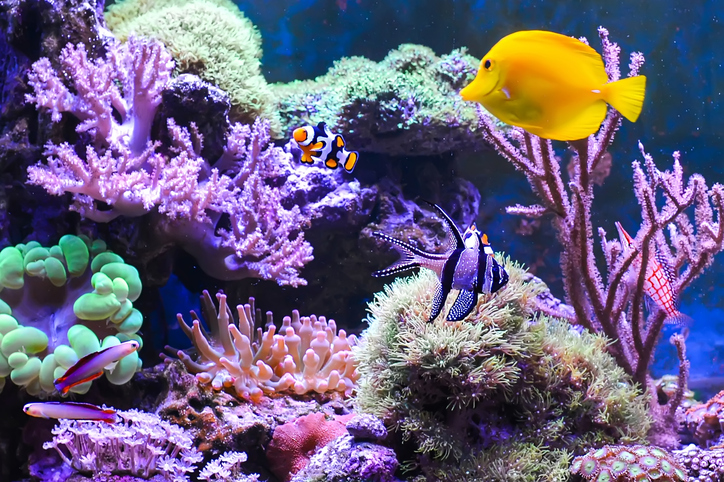
It’s also important to note that clownfish form symbiotic relationships with anemones in the wild. While it’s not necessary to provide an anemone in a home aquarium, it can be beneficial for their health and well-being. If you do choose to introduce an anemone, make sure to select a species that is suitable for your tank size, and that will not harm your other fish.
Clownfish will also host certain coral polyps – I had lots of fun with my clowns hosting frogspawn coral, for instance. As with most fish – plenty of hiding spaces are also ideal.
Nutrition and Feeding
Clownfish are omnivores and require a balanced diet of both meat and plant matter. In the wild, they feed on algae, plankton, and small crustaceans.
In a home aquarium, you can feed them a variety of foods, including flakes, pellets, frozen or live brine shrimp, and mysis shrimp. It’s important to feed them small amounts multiple times a day to prevent overfeeding and ensure that all fish receive an equal share.
Breeding Clownfish
Breeding clownfish can be a rewarding experience for experienced fish keepers. If you do well, you can even take your clown babies to local fish stores for store credit! At least… they do it locally here.
To begin breeding, you will need a breeding pair and a suitable setup, including a spawning cone or specialized breeding net. The breeding process typically involves laying and fertilizing eggs, followed by the careful incubation and raising of the fry.
The breeding process can be complex and requires careful attention to water quality, feeding schedules, temperature, and lighting. It’s important to thoroughly research the breeding process and consult with experienced breeders or aquarists before attempting to breed.
Common Clownfish Types
Here is a quick list of common types of clownfish!
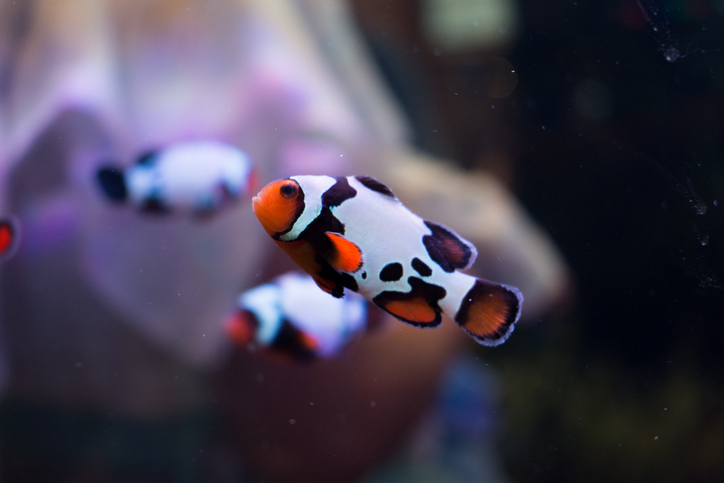
Percula Clowns
The Percula Clownfish, scientifically named Amphiprion percula, is a vibrantly colored species native to the warm waters of the Pacific Ocean, particularly in areas around Papua New Guinea, the Great Barrier Reef, and the Solomon Islands. They are characterized by their distinctive bright orange bodies, accentuated by three broad, white stripes with thin black outlines, the first of which is located just behind the eyes.
Renowned for their symbiotic relationship with anemones, the true percula clownfish is a popular choice among aquarium enthusiasts due to their small size, reaching just about 3 to 4 inches, and their relatively peaceful demeanor.
Ocellaris Clowns
The Ocellaris Clownfish, Amphiprion ocellaris, also known as the false percula or common clownfish, is often mistaken for its close cousin, the percula clown, due to its similar coloration. Native to the Indo-Pacific region, Ocellaris are usually found in shallow waters and coral reefs.
While they share similar color patterns with the Percula, the Ocellaris have less intense coloring, and their black outlines on white bands are much thinner, almost invisible. They are highly popular among aquarists due to their hardiness and adaptability, making them ideal for beginner hobbyists.
Maroon Clowns
Maroon Clownfish, or Premnas biaculeatus, are a distinct and robust species of clownfish known for their striking dark red or maroon color and three thin white bands. Their name “maroon” refers to their deep red coloration. Found predominantly in the Indo-Pacific region, this species is one of the larger species, capable of growing up to 6 inches in length.
They are recognized for their territorial and aggressive nature, particularly when breeding, making them a challenging species to keep in home aquariums.
Clarkii Clowns
The Clark’s Clownfish, or Amphiprion clarkii, is a versatile and widespread clownfish species found throughout the Indo-Pacific region. Named after ichthyologist John Maurice Clark, these fish are distinguished by their dark brown to black bodies and two vertical white bands, with a highly variable third bar depending on their specific locale.
As one of the most adaptable species, they have been known to associate with a variety of anemone types and are prized for their resilience and vibrant coloration in the aquarium trade.
Hybrid Variants from ORA:
1. Black Ice Clownfish: A hybrid of the Ocellaris and Black Ocellaris, it features unique patterns and colorations.
2. Black Snowflake Clownfish: A derivative of the Snowflake Ocellaris Clownfish, this variant is characterized by a black body with white markings.
3. Wyoming White Clownfish: This striking Ocellaris variant has a stark white body devoid of the usual orange coloration.
4. Frostbite Clownfish: A crossbreed between the Snowflake and Naked Ocellaris, this hybrid has white flurries over its body.
5. DaVinci Clownfish: An Ocellaris variant noted for the complex and beautiful patterns that grace its white bands.
6. Onyx Percula Clownfish: This hybrid variant is dark brown or black color, differing significantly from the bright orange standard Percula Clownfish.
7. Picasso Percula Clownfish: Known for their unique white markings that resemble abstract art.
8. Platinum Percula Clownfish: A rare Percula variant characterized by a predominantly white body and light orange markings.
9. Maroon Lightning Clownfish: A rare variant of the Maroon Clownfish, distinguished by its unique white pattern that appears like lightning.
10. Goldstripe Maroon Clownfish: A Maroon Clownfish variant with broad, golden bands instead
How to get a clownfish to host an anemone
As previously mentioned, clownfish form symbiotic relationships with anemones in the wild. In a home aquarium, it can take time for your clownfish to host an anemone, and not all clownfish species will host anemones.

To encourage your clownfish to host an anemone, you can place the anemone in the tank and observe the behavior of your fish. Some clownfish will soon begin to explore and interact with the anemone, signaling that they may be ready to host. However, not all clownfish will host anemones, and introducing an anemone to your tank can be a risk, as some species can be harmful to other fish and invertebrates.
I tried with a sebae anemone, and it gobbled up one of my damselfish before I re-homed the anemone to a friend’s tank. Personally, I prefer carpet anemones or corals with long tentacles for my clowns, and I have experienced decent success with their hosting.
Dominance Behavior in Clownfish
Clownfish, like most fish, have a social hierarchy that can sometimes lead to aggression and dominance behavior. They will typically form a hierarchy with the largest fish being the dominant and the smallest fish being the submissive.
You may observe some chasing, nipping, or fin-chomping behavior among your clownfish as they establish their hierarchy. If you notice excessive aggression or injury, it may be necessary to separate the fish or rearrange the tank to minimize conflict.
Also, if you see two clowns near each other and one starts vibrating… don’t freak out! This is a sign of submissive behavior. This is important since only one female clown typically lives in each group, and dominance plays a role in the transition.
Understanding Clownfish Gender
Clownfish have a unique and fascinating gender system that differs from most other fish species. Male and female clownfish have distinct physical and behavioral characteristics, with females typically being larger and more aggressive than males.
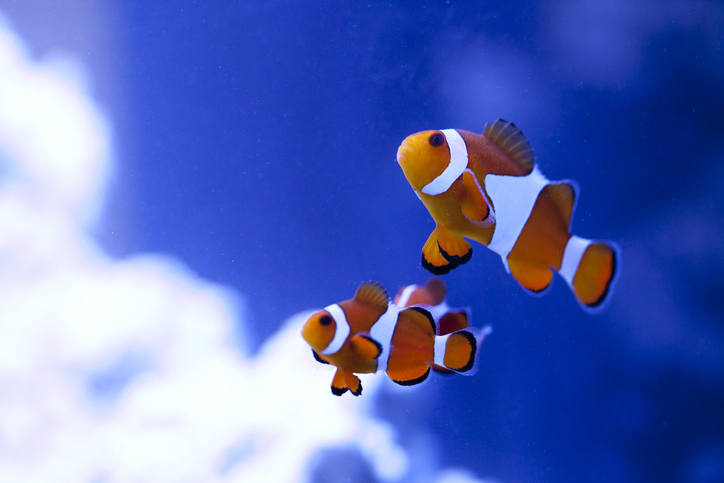
Additionally, clownfish have the ability to change their gender in response to environmental factors. If the dominant female dies or is removed from the tank, the dominant male will transition into a female and take over the role of maintaining the hierarchy and breeding.
Clownfish Harems
In the wild, clowns typically form harems, with one dominant female and several males. In a home aquarium, it’s possible to keep multiple clownfish, but it’s crucial to ensure that the tank is large enough to allow each fish its space and territory.
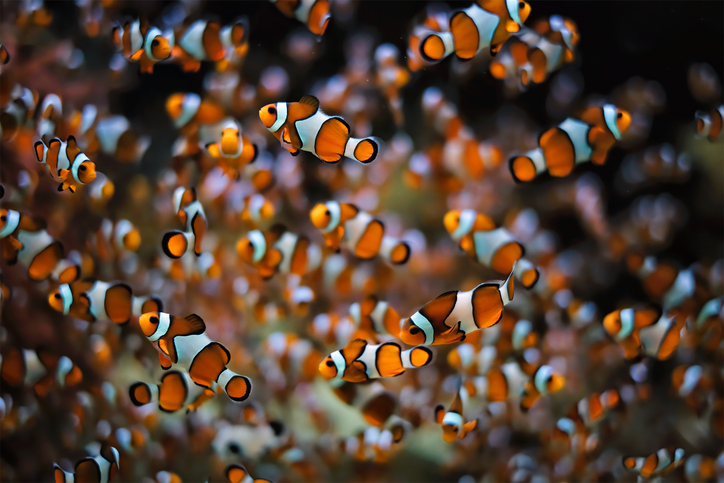
If you plan to keep multiple clowns, it’s recommended to introduce all fish at the same time to minimize aggression and establish a peaceful hierarchy. You should also ensure that there is ample hiding space for each fish to retreat and establish its territory.
Conclusion
Clownfish are beloved aquarium residents for their vibrant colors, playful personalities, and unique behaviors. With proper care and attention, these hardy fish can live a long and healthy life in a home aquarium. By following the tips and guidelines outlined in this essential clownfish care guide, you can ensure an optimal environment for your fish and enjoy years of joy and companionship with these colorful creatures.

About the Author
With decades of experience, James shares his extensive knowledge in aquatics through this website, covering a broad series of topics related to the pond and aquarium hobby. Aiming to guide both beginners and experienced hobbyists alike, his goal is to help educate aquatic enthusiasts for the long-term betterment of the hobby as well as the environment. Learn More >>
Exploring Butterflyfish Species for Marine Aquarium Enthusiasts
Disclaimer: This blog shares my personal experiences, research, and insights as an aquatics hobbyist. While I strive to provide accurate information, please consult a professional or your local fish store for tailored advice on your specific tank setup. Remember,...
Exploring Basslets for Your Marine Aquarium
Disclaimer: This blog shares my personal experiences, research, and insights as an aquatics hobbyist. While I strive to provide accurate information, please consult a professional or your local fish store for tailored advice on your specific tank setup. Remember,...
The Six Line Wrasse: A Comprehensive Guide to Care and Keeping
Disclaimer: This blog shares my personal experiences, research, and insights as an aquatics hobbyist. While I strive to provide accurate information, please consult a professional or your local fish store for tailored advice on your specific tank setup. Remember,...
